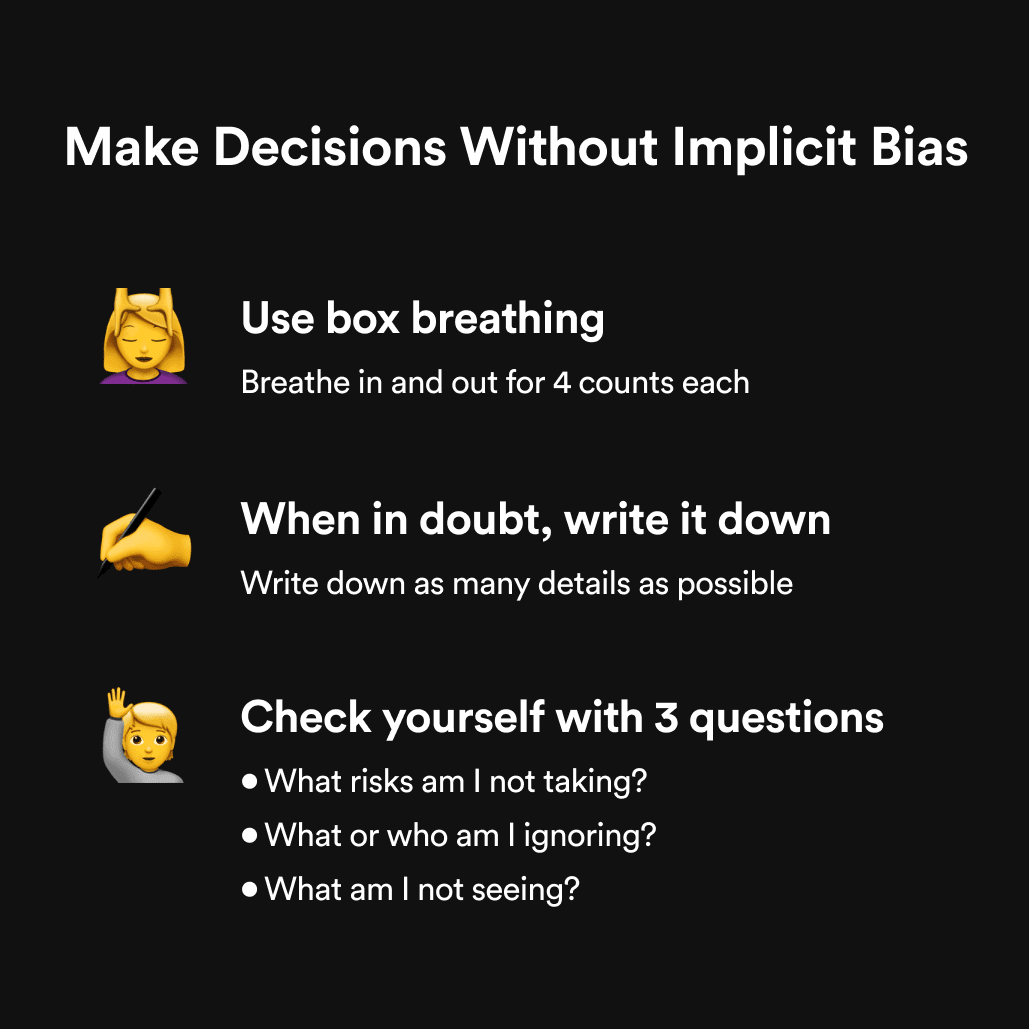Exposing your Implicit Bias
Avoid snap judgments and drive better results for your team.

Inspired by:
Robin Wright-Pierce, Diversity Coach and Senior Social Equity Specialist at Design Impact

Exposing your Implicit Bias
Implicit biases are internal beliefs that make us favor people, ideas, or anything we’re familiar with over other options.
Sometimes those options are objectively better, but our biases get in the way.
Revealing and addressing your implicit biases will make you a more strategic decision-maker. Here's how.
💆♀️ 1. Use box breathing
Imagine you've got an important task but you're too swamped to handle it yourself. You need to delegate it, but you're worried the only person who's available won't be able to do a good enough job.
Try box breathing: breath in, hold your breath, and exhale for 4 counts each.
This helps us be more present in the moment, and instantly boosts our control over the decision.
✍️ 2. When in doubt, write it down
The less information we have, the more we rely on our biases to fill the gaps. Writing down as many details as possible keeps your biases from hijacking your decisions.
Back to that important task:
- Write down everything that's involved.
- Write down the reasons you think your team member may struggle with it.
Getting these unconscious thoughts on paper is the next step to exposing your hidden biases.
🙋 3. Check yourself with 3 questions
When bias kicks in, we tend to stay in a more close-minded space.
Consider the task you're worried about delegating again. Open yourself up by asking:
• What risks am I not taking? • What or who am I ignoring? • Do I have evidence that my doubts are true?
These will help you proactively look for information you might otherwise miss.
📸 Exposé
With these tactics, you're on the way to becoming a more conscious decision-maker.
Here's some other scenarios where you can use this: • Choosing between potential hires • Promotion decisions and performance reviews • Deciding on a tech stack • Choosing a provider
Good luck!

Become a world-class leader in two minutes a day